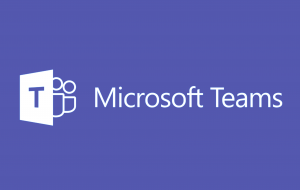The Community Response to Shadow IT
I’ve written about this in the past, but thought it was time to once again make some of these important points: There are fundamental differences between collaboration across a small team and collaboration across the enterprise. They have different use cases, they require different features — and yet they are often treated as one and the same. Build out SharePoint — or any other collaboration platform — by focusing only on the enterprise-level requirements, and small teams will find it difficult to be effective. Far too many organizations have lived through this.
The end result is a “directionally-correct” intranet that nobody uses, and a strong “Shadow IT” counter-culture that spreads throughout the organization. Those small teams turn to consumer-based tools and technologies to get their work done, outside of the purview of IT.
Likewise, build out your environment by focusing on small team collaboration without considering how these use cases roll up into the broader organizational knowledge management and collaboration initiatives, and you will likely sacrifice your enterprise-level requirements. Clearly, there is a gap between the needs of small teams and enterprise collaboration platforms. The most efficient and effective way to bridge this gap is through social communities.
 The terms “social” and “collaboration” are often viewed as synonymous, and organizations that are able to successfully infuse enterprise collaboration systems with social capabilities are seeing dramatic improvements to adoption and engagement metrics. Look at the success of Microsoft Teams, which is now the fastest-growing Microsoft product of all time, and which quickly eclipsed its competitors (sorry Slack) and shows no sign of slowing down. While there are a lot of cool features in Teams, at its core it is basically the pairing of social tools (chat) with document collaboration.
The terms “social” and “collaboration” are often viewed as synonymous, and organizations that are able to successfully infuse enterprise collaboration systems with social capabilities are seeing dramatic improvements to adoption and engagement metrics. Look at the success of Microsoft Teams, which is now the fastest-growing Microsoft product of all time, and which quickly eclipsed its competitors (sorry Slack) and shows no sign of slowing down. While there are a lot of cool features in Teams, at its core it is basically the pairing of social tools (chat) with document collaboration.
Why have solutions like Teams so dramatically impacted communication and collaboration within the enterprise? People are inherently social: we share our content, we ask questions, we look for opportunities to impart our knowledge and expertise. When document and process-centric systems are paired with social capabilities, we begin to tap into these natural human activities. The end result is that people become more engaged, more connected, and more willing to add content and context to the projects in which they are involved.
The value of social collaboration is simple:
The more people are involved in collaborative activities, the greater the business value received. Likewise, if people are not participating — there is no business value.
Understanding the Core Use Cases
Small teams are effective because, in general, everyone knows their role and responsibilities, which makes it easy to share information and have conversations. A single manager knows the capabilities of each member of his or her team, and when a new task appears, can quickly assign that task to the right person. Most collaboration tools (and I would argue Teams) are designed for the small team model — where everyone is directly connected, and real-time communication is essential. This “line of sight” collaboration tends to be less formal, allowing people to share quickly and easily, with minimal requirements for documentation, metadata (other than what is automated), and process.
End users love this model, because it gives people the freedom to share what they want, when they want, with whomever they want. But it tends to ignore some corporate governance concerns — and long-term knowledge management concerns. The small team use cases is modeled after the belief that the more barriers you put up, the less likely people are to collaborate.
Where small teams are focused on real-time conversation and tactical activities, such as reviewing and co-editing documents, use cases at the enterprise have more to do with broad corporate communications, complex business process management activities, or in capturing and storing collective knowledge with various retentions and governance requirements. Enterprises want to catalog, protect, and make discoverable their collective information assets.
What bridges this gap between small team and enterprise requirements is the social community. Social has the ability to tap into the natural flow of discussion that happens over the life of a project. When a social community is paired with document collaboration (as with SharePoint), knowledge and expertise that might otherwise be lost is captured and stored *in context*.
Enabling Effective Collaboration
When social collaboration happens outside of your document collaboration or intranet platform, additional silos of information are created. Ideally, this capability belongs within a single platform — not loosely integrated through “feeds” or requiring end users to jump between multiple tabs, but natively and fluidly within the user experience, regardless of whether that system is on-premises, online, or a hybrid environment.
When paired with your document collaboration platform, the social community bridges the gap between small teams and the enterprise, giving the small team the tools they need to collaborate quickly and easily, while large organizations can leverage the conversation and content generated within these communities to better surface their content, add context and relevant metadata — all while enforcing corporate standards around governance, security, and compliance.
I think we’re at the beginning of Microsoft Teams growth. There are many exciting initiatives underway to add even richer features and capabilities utilizing artificial intelligence and machine-learning, such as Project Cortex and Microsoft Search. While it’s great to see incremental improvements to the UX and individual workloads, I’m more interested in seeing some of these truly game-changing capabilities over the next year or two.




